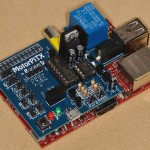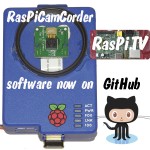
I wanted to be able to interact with my twitter account(s) using Python scripts. I’d heard there was a Python library called tweepy that does a lot of the Applications Programming Interface (API) work for you. I’d also seen quite a few posts in the Python section of the Raspberry Pi Forums, where people had problems with it. Prize Draw I thought I’d take a look, spurred on by the idea that I’d like to be able to select a random twitter follower every once-in-a-while for a prize draw. So, last week, I spent a […more…]








